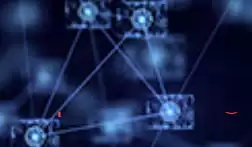What happened? The Stacks blockchain project team has published a technical document showing how a new digital asset called Stacks bitcoin (sBTC) can be used to make bitcoin fully programmable. Unlike the Ethereum or Solana networks, the simpler Bitcoin scripting language limits the capabilities of developers. Stacks wants to overcome these limitations by introducing a new 1:1 BTC-linked digital asset that can be used to create smart contracts on the platform, and also easily converted back to BTC.

Stacks Plan
What else does the document say? The Bitcoin network is relatively slow by nature and does not provide the smart contracts needed to create complex applications, the document says. Therefore, faster and more complex applications should be created outside of the base layer.
The term "layers" is a designation of Stacks for any system outside of the Bitcoin base layer, for example, a sidechain, which is a secondary blockchain interacting with the main one. In the whitepaper, Stacks acts as a bitcoin sidechain running on both sBTC and the project's native tokens — STX.
The white paper claims that the bitcoin sidechain can unlock "hundreds of billions of dollars" in the decentralized finance (DeFi) sector on BTC. According to Stacks co—founder Muneb Ali, the concept will be formalized within the framework of Stacks Improvement Proposal (SIP) 21. "The vote has passed and implementation has begun," Ali said in an interview with CoinDesk. According to him, the release will take place in eight to nine months.
The principle of sBTC operation. The current Stacks protocol uses a consensus mechanism called Proof-Of-Transfer, where anyone can mine or stack.
Miners are rewarded in STX for mining Stacks blocks. To begin with, they have to place bitcoin in order to get miner privileges. This BTC is subsequently distributed as a reward among the stacking participants who maintain a copy of the Stacks registry. They also have to block STX for a certain period of time to get privileges.
In the proposed sBTC binding system, users send ordinary bitcoin to a wallet controlled by stacking participants. This action allows you to issue an equivalent amount of sBTC that can be used in smart contracts on Stacks. To get their bitcoin back, users return sBTC to the wallet. The stacking participants then sign these requests and return an equivalent amount of bitcoin to the users. This also prompts the Stacks protocol to burn the corresponding sBTC.
On December 20, the founder of the Waves blockchain network, Alexander Ivanov, announced the launch of a new stablecoin after solving the problem of disconnecting Neutrino USD (USDN) from the dollar. He promised that the new asset will be more stable and will not lose parity with the fiat currency.

 Spain
Spain
 Portugal
Portugal





